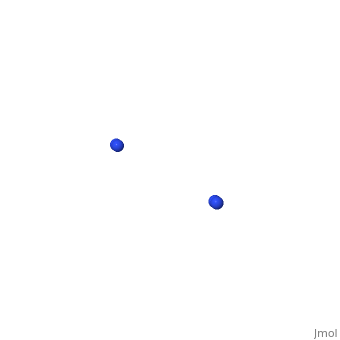1mae: Difference between revisions
No edit summary |
No edit summary |
||
| Line 3: | Line 3: | ||
<StructureSection load='1mae' size='340' side='right'caption='[[1mae]], [[Resolution|resolution]] 2.80Å' scene=''> | <StructureSection load='1mae' size='340' side='right'caption='[[1mae]], [[Resolution|resolution]] 2.80Å' scene=''> | ||
== Structural highlights == | == Structural highlights == | ||
<table><tr><td colspan='2'>[[1mae]] is a 2 chain structure with sequence from [ | <table><tr><td colspan='2'>[[1mae]] is a 2 chain structure with sequence from [https://en.wikipedia.org/wiki/Atcc_25364 Atcc 25364]. Full crystallographic information is available from [http://oca.weizmann.ac.il/oca-bin/ocashort?id=1MAE OCA]. For a <b>guided tour on the structure components</b> use [https://proteopedia.org/fgij/fg.htm?mol=1MAE FirstGlance]. <br> | ||
</td></tr><tr id='ligand'><td class="sblockLbl"><b>[[Ligand|Ligands:]]</b></td><td class="sblockDat"><scene name='pdbligand=HDZ:NITROGEN+MOLECULE'>HDZ</scene></td></tr> | </td></tr><tr id='ligand'><td class="sblockLbl"><b>[[Ligand|Ligands:]]</b></td><td class="sblockDat" id="ligandDat"><scene name='pdbligand=HDZ:NITROGEN+MOLECULE'>HDZ</scene></td></tr> | ||
<tr id='NonStdRes'><td class="sblockLbl"><b>[[Non-Standard_Residue|NonStd Res:]]</b></td><td class="sblockDat"><scene name='pdbligand=0AF:7-HYDROXY-L-TRYPTOPHAN'>0AF</scene></td></tr> | <tr id='NonStdRes'><td class="sblockLbl"><b>[[Non-Standard_Residue|NonStd Res:]]</b></td><td class="sblockDat"><scene name='pdbligand=0AF:7-HYDROXY-L-TRYPTOPHAN'>0AF</scene></td></tr> | ||
<tr id='activity'><td class="sblockLbl"><b>Activity:</b></td><td class="sblockDat"><span class='plainlinks'>[ | <tr id='activity'><td class="sblockLbl"><b>Activity:</b></td><td class="sblockDat"><span class='plainlinks'>[https://en.wikipedia.org/wiki/Methylamine_dehydrogenase_(amicyanin) Methylamine dehydrogenase (amicyanin)], with EC number [https://www.brenda-enzymes.info/php/result_flat.php4?ecno=1.4.9.1 1.4.9.1] </span></td></tr> | ||
<tr id='resources'><td class="sblockLbl"><b>Resources:</b></td><td class="sblockDat"><span class='plainlinks'>[ | <tr id='resources'><td class="sblockLbl"><b>Resources:</b></td><td class="sblockDat"><span class='plainlinks'>[https://proteopedia.org/fgij/fg.htm?mol=1mae FirstGlance], [http://oca.weizmann.ac.il/oca-bin/ocaids?id=1mae OCA], [https://pdbe.org/1mae PDBe], [https://www.rcsb.org/pdb/explore.do?structureId=1mae RCSB], [https://www.ebi.ac.uk/pdbsum/1mae PDBsum], [https://prosat.h-its.org/prosat/prosatexe?pdbcode=1mae ProSAT]</span></td></tr> | ||
</table> | </table> | ||
== Function == | == Function == | ||
[[ | [[https://www.uniprot.org/uniprot/DHML_PARVE DHML_PARVE]] Methylamine dehydrogenase carries out the oxidation of methylamine. Electrons are passed from methylamine dehydrogenase to amicyanin. [[https://www.uniprot.org/uniprot/DHMH_PARVE DHMH_PARVE]] Methylamine dehydrogenase carries out the oxidation of methylamine. Electrons are passed from methylamine dehydrogenase to amicyanin. | ||
== Evolutionary Conservation == | == Evolutionary Conservation == | ||
[[Image:Consurf_key_small.gif|200px|right]] | [[Image:Consurf_key_small.gif|200px|right]] | ||
Revision as of 09:54, 18 August 2021
The Active Site Structure of Methylamine Dehydrogenase: Hydrazines Identify C6 as the Reactive Site of the Tryptophan Derived Quinone CofactorThe Active Site Structure of Methylamine Dehydrogenase: Hydrazines Identify C6 as the Reactive Site of the Tryptophan Derived Quinone Cofactor
Structural highlights
Function[DHML_PARVE] Methylamine dehydrogenase carries out the oxidation of methylamine. Electrons are passed from methylamine dehydrogenase to amicyanin. [DHMH_PARVE] Methylamine dehydrogenase carries out the oxidation of methylamine. Electrons are passed from methylamine dehydrogenase to amicyanin. Evolutionary Conservation Check, as determined by ConSurfDB. You may read the explanation of the method and the full data available from ConSurf. Publication Abstract from PubMedTo identify the reactive part of the orthoquinone function of the tryptophan-derived cofactor found in methylamine dehydrogenase (MADH), we have determined the crystal structures of MADH from Thiobacillus versutus inhibited by methylhydrazine and (2,2,2-trifluoroethyl)hydrazine. Extra electron density attached to C6 of the tryptophyl tryptophanquinone cofactor shows that this atom and not C7 is the reactive part of the ortho-quinone moiety. The density retained after hydrazine inhibition is much less extensive than expected, however, suggesting that partial breakdown of the inhibitors after reaction with the cofactor may take place. A detailed description is presented of the cofactor environment in an improved model of MADH which now includes information from the recently determined gene sequence of the cofactor-containing subunit [Ubbink, M., van Kleef, M.A.G., Kleinjan, D., Hoitink, C.W.G., Huitema, F., Beintema, J.J., Duine, J.A., & Canters, G.W. (1991) Eur. J. Biochem. 202, 1003-1012]. We hypothesize that Asp76 is responsible for proton abstraction from the alpha-carbon of the substrate during catalysis. Active site structure of methylamine dehydrogenase: hydrazines identify C6 as the reactive site of the tryptophan-derived quinone cofactor.,Huizinga EG, van Zanten BA, Duine JA, Jongejan JA, Huitema F, Wilson KS, Hol WG Biochemistry. 1992 Oct 13;31(40):9789-95. PMID:1390754[1] From MEDLINE®/PubMed®, a database of the U.S. National Library of Medicine. See AlsoReferences |
| ||||||||||||||||||||
